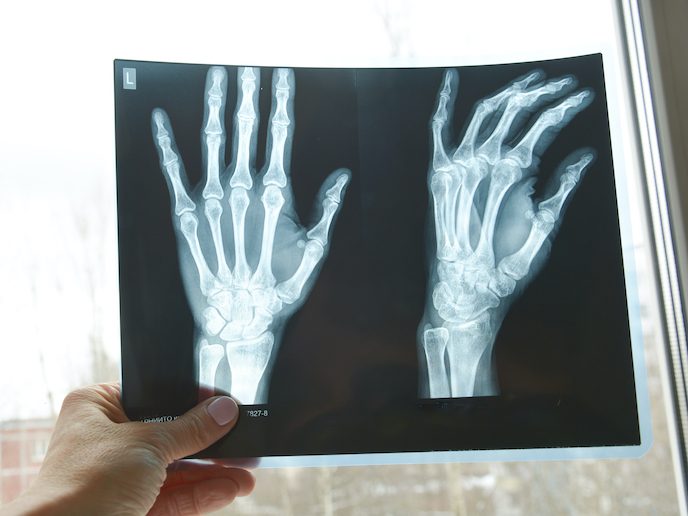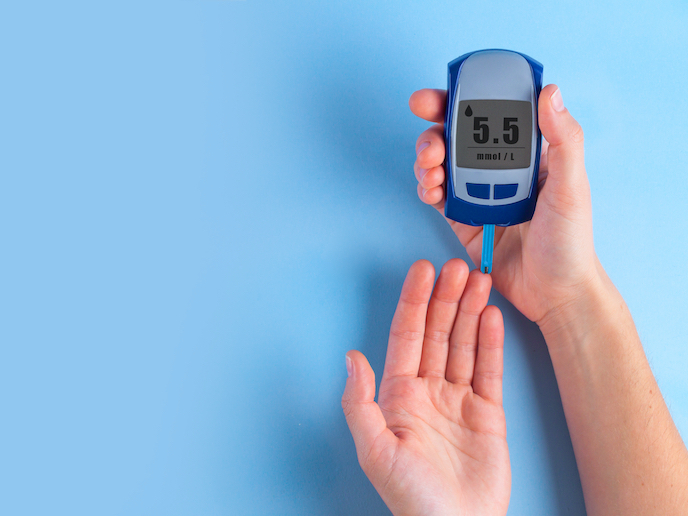Electric discovery could revolutionise bone surgery
This discovery could lead to the development of a new generation of grafts and prostheses that react to body pressure and help bone regeneration after surgery. The technique could also potentially reduce the need for bone donors, resulting in a reduction in both medical costs and risks.
A flexible material
“Our bones have outstanding remodelling properties,” explain FLEXOBONEGRAFT’s Marie Skłodowska-Curie fellow, Nathalie Barroca and project coordinator Gustau Catalan, from the Catalan Institute of Nanoscience and Nanotechnology (ICN2). “Fractures heal, while impacts can make them stronger. But a lack of exercise – or a lack of gravity, as experienced in space – can make bones more porous and weaker.” Furthermore, the impressive adaptive abilities of bone decline with age. In fact, bone has become the most transplanted tissue after blood, with over 1 million procedures a year carried out in Europe alone. With an ageing population, Europe is likely to see an increase in bone-related conditions such as osteoporosis. “There is a clear need for novel treatments for musculoskeletal diseases, and research in bone repair is a flourishing field,” adds Catalan.
Biomedical breakthroughs
Catalan’s group at ICN2 in Barcelona had previously discovered that bone mineral is flexoelectric. Flexoelectricity (which literally means ‘bending electricity’) describes the ability of a material to produce electricity in response to deformations, which is important as our bones are constantly subjected to mechanical pressures. Following the success of this initial ERC-funded study, a team including biologist Raquel Nuñez, two physicists (Gustau Catalan and Fabian Vasquez) and materials scientist Nathalie Barroca investigated some of the physiological effects of flexoelectricity on bone remodelling in the FLEXOBONEGRAFT project. They discovered that flexoelectricity first causes osteocyte cells adjacent to bone fractures to die, thereby starting the bone’s repair protocol. It then stimulates bone-forming cells (called osteoblasts) to secrete bone mineral and generate higher levels of osteocalcin (a calcium-binding protein). “We saw that flexoelectricity thus opens up new perspectives for regenerative treatments of bone,” says Barroca, who was the beneficiary of the Marie Skłodowska-Curie fellowship. “The next step was to select medically approved biocompatible and biodegradable polymers that could be used as bone-mimicking materials, and to then characterise their flexoelectric properties.” To further mimic the chemistry of bone, Barroca mixed polymers with nanoparticles of hydroxyapatite, the main mineral of bone. A few compositions were identified as having the same flexoelectric coefficient as bone, sufficient to stimulate cells. This discovery, soon to be published, will be useful for biomedical engineers aiming to incorporate flexoelectricity as a design parameter. “The identified materials have also been used to create structural designs that undergo local micro-bending (and thus generate flexoelectricity) in response to body-like mechanical pressures,” notes Barroca. “This has been achieved by 3D printing scaffolds with overlapping micro-beams and hollows of variable sizes. We also aim to study the effect of such micro-textured composites on actual bone cells.” The project findings tap into growing interest in the use of biomaterials for medical purposes. Polymers can already be found in bone prosthetics, and as scaffolds to ‘guide’ the regenerative activity of bone cells. These scaffolds then degrade in biocompatible sub-products that can be processed by the body.
Keywords
FLEXOBONEGRAFT, bone, biomaterials, composites, polymers, flexoelectricity, osteoporosis, calcium







